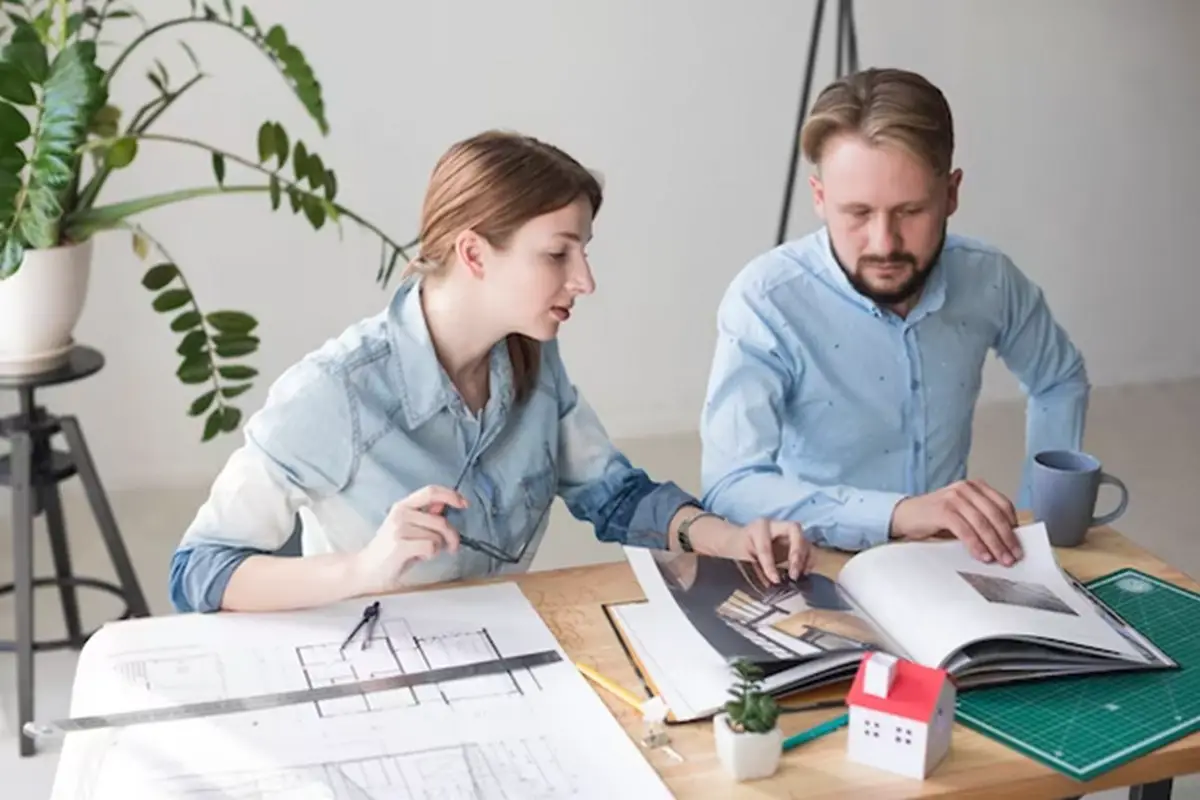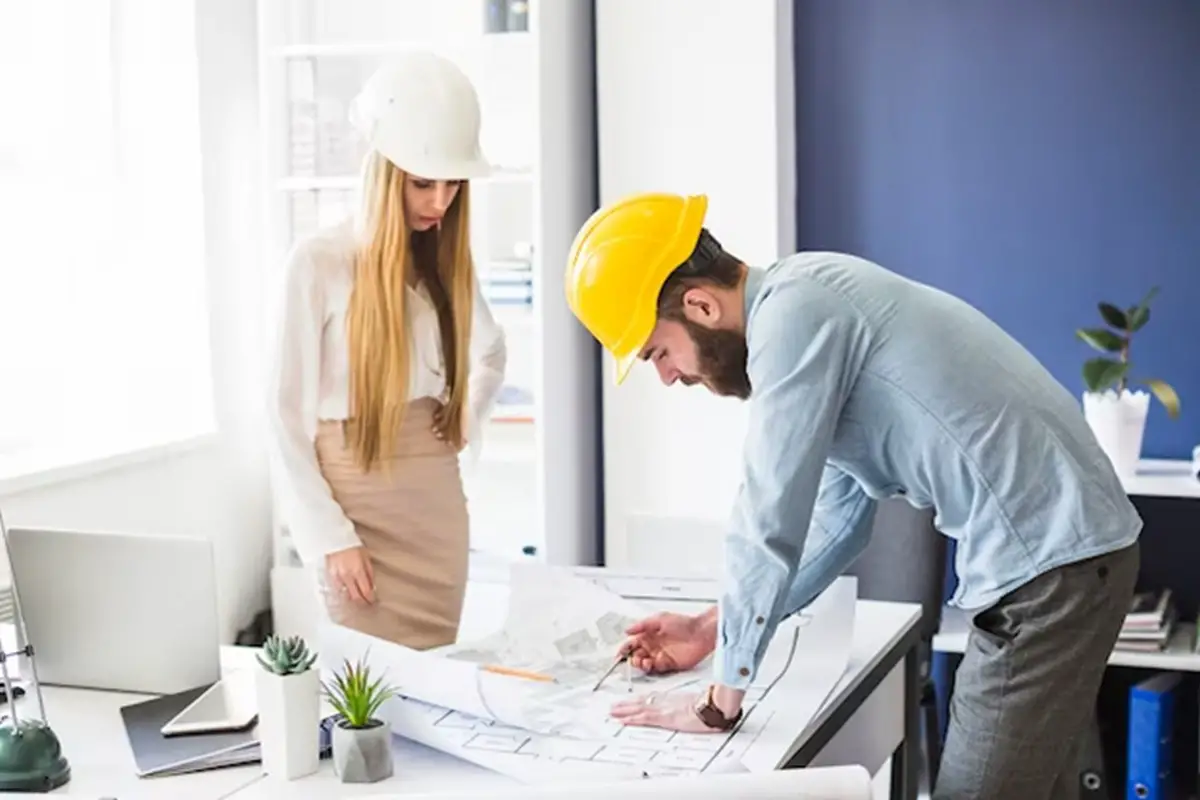Things an architect can incorporate to enhance creativity, Architecture office insuring advice, Property designers
Architects can enhance creativity
7 March 2024
Things An Architect Can Incorporate To Enhance Creativity
Architectural creativeness is not just a stroke of luck or a flash of insight; it’s a toolkit of methods and environments that can be cultivated. For those in the field of architecture, the pursuit of creativity is as critical as the mastery of structural design and engineering. In this guide, we will explore a range of strategies architects can infuse into their daily routines to nurture and enhance their creative prowess.
Whether you’re a burgeoning architecture student brimming with potential, an emerging architect on the rise, or a seasoned design enthusiast—this post will provide you with a spectrum of innovative ideas to stimulate your mind and elevate your creative output. Among these strategies, we’ll explore the integration of nature inspiration, collaborative workspaces, and the inclusion of art installations as tools to ignite your creative spark. Lastly, we’ll touch on more unconventional methods to help you be creative.
Creativity is the lifeblood of architecture, and with a multidisciplinary approach, the possibilities are limitless.
Here Are A Few Things To Enhance Creativity In Architects
1. Nature-Inspired Workspaces
Nature has long been a muse for architects and designers, with its organic forms, textures, and colors finding their way into the very fabric of our cities and homes. This chapter dives into how architects can enhance their creative environment by connecting with nature.
Harnessing Natural Light and Views
Natural light is the undisputed champion of architectural elements. It influences our mood, perception of space, and even our bodies’ circadian rhythms. Architects can optimize their workspaces by positioning desks near windows to capitalize on natural light and provide soothing views of the outside world.
Biophilic Design
The principles of biophilic design advocate for integrating natural elements into built environments, seeking to establish a direct link between the human experience and the natural world. Introducing greenery, water features, and natural materials can be a balm for the mind, fostering a creative environment that is both calm and invigorating.
2. Collaborative Spaces
The exchange of ideas is a catalyst for creativity. This chapter focuses on the design of spaces that facilitate interaction and collaboration, promoting a cross-pollination of thought.
Open Plan Concepts
Open-plan designs break down physical barriers, encouraging spontaneous interaction. Incorporating shared areas such as lounges or cafés within the architect’s work environment can lead to unexpected connections and the free flow of creative energy.
Nooks and Crannies
Conversely, small, secluded spaces can provide a retreat for focused individual work or intimate group discussions. Designing these alcoves with acoustic properties in mind can maintain a balance between connection and concentration.
3. Art Installations and Creative Displays
Visual stimuli can work wonders on the creative mind. This section explores the potential impact of art within architectural spaces.
Curating Thought-Provoking Spaces
Integrating art that challenges perceptions or is thematically linked to the project can offer new perspectives and spark unconventional ideas.
Dynamic and Interactive Art
Art that moves, changes, or reacts to its environment can give a space kinetic energy and inspire innovative responses to architectural challenges.
4. Flexible Furniture And Design Layouts
Adaptability can be a springboard for creativity, allowing architects to experiment with different configurations and work setups.
Modular Workstations
Furniture systems that can be easily reconfigured promote a sense of agility and fluidity within the workspace, allowing for dynamic collaboration and individual work as needed.
Multi-Use Spaces
Architects should consider the multiple functions a space might serve, designing with flexibility to accommodate future needs and uses. This can encourage lateral thinking in design solutions.
5. Incorporating Technology
From virtual reality to advanced modeling software, technology is a conduit for new architectural ideas to take shape. This section explores the fusion of tech with traditional design processes.
Interactive Design Tools
Developments in technology have led to the creation of software that allows for real-time manipulation of designs, simulating various environmental and contextual factors. By integrating these tools into their process, architects can explore more ideas with less time and effort.
Smart Building Components
The emergence of smart components in construction, from sensor-integrated surfaces to adaptive climate control, has broadened the palette of possibilities for architects. These modern elements can interact with design in unexpected and imaginative ways.
6. Personalized and Comfortable Workspaces
Architects are best poised to create when they feel at home in their working environment.
Ergonomic Considerations
Comfort is key when it comes to creativity. Ensuring that workspaces are ergonomically designed can prevent distractions and allow focus to remain on the task at hand.
Personalization
Allowing for personal touches in the workspace can help establish a sense of ownership and identity, inspiring a more personal and imaginative approach to design.
Understanding Diet and Healthy Activity
Some are exploring tools for relaxation and stress reduction. Used in moderation it might help architects find the clarity and calm necessary to engage in creative, focused thinking. Carefully consider healthy diets, supplements and sport as a potential enhancer for relaxation and focus.
Regular Breaks and Mindfulness Practices
Creativity often flourishes when the mind is uncluttered. Encouraging breaks and mindfulness exercises can keep architects’ minds fresh and ready for new challenges.
Scheduled Rest Periods
Regular, short breaks throughout the workday can prevent burnout and stimulate the unconscious mind, where many creative ideas are born.
Mindful Practices
Activities such as meditation, yoga, or simply stepping outside for fresh air can provide a reset, allowing architects to return to work with renewed focus and creativity.
Continued Learning and Exposure to Diverse Influences
Creativity thrives on learning and exposure to new ideas. Actively seeking out different influences can inject fresh perspectives into an architect’s work.
Lifelong Learning
Attending lectures, workshops, and seminars can keep architects abreast of new developments in the field and beyond.
Travel and Cultural Immersion
Traveling and immersing in different cultures can broaden an architect’s worldview, leading to many inventive architectural responses to cultural and environmental contexts.
Architects can enhance creativity Conclusion
By incorporating the strategies outlined in this guide, architects can create an environment that nurtures and enhances their creative process. Each method is a brushstroke on the canvas of an architect’s professional repertoire, contributing to a dynamic and innovative approach to design.
The pursuit of creativity is ongoing, and by experimenting with these ideas while staying true to individual design philosophies, architects can propel their practice to new heights. Remember, in architecture, the most ingenious designs often emerge from the most fertile creative environments.
Comments on this guide to Things An Architect Can Incorporate To Enhance Creativity article are welcome.
Glasgow Housing Designs
Contemporary Glasgow Residential Property Designs – selection:
249 West George Street Glasgow student flats
Comments / photos for the Architects can enhance creativity advice guide page welcome.

